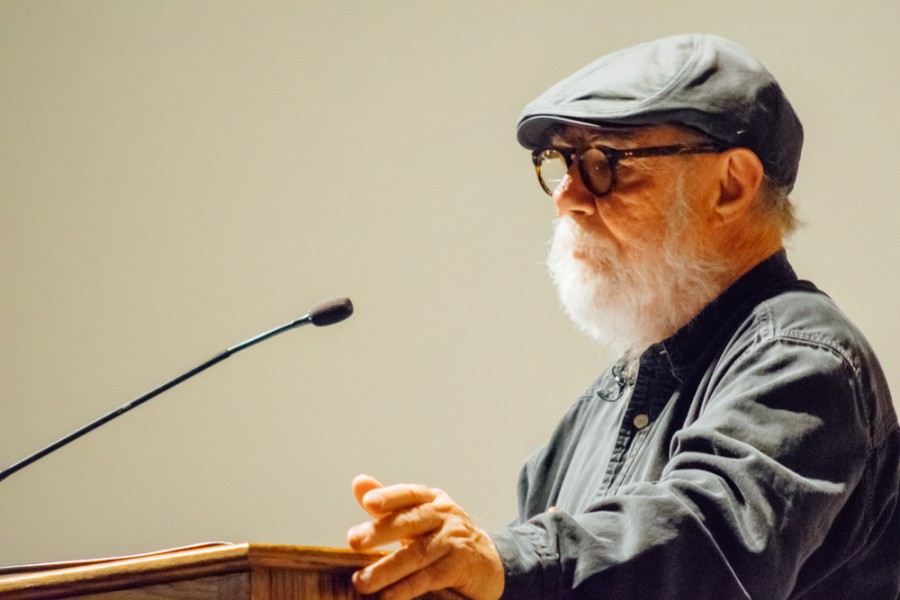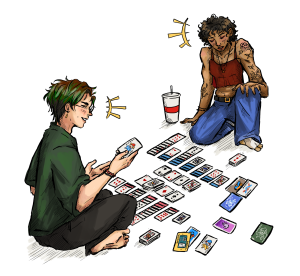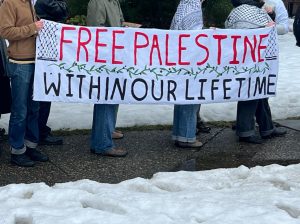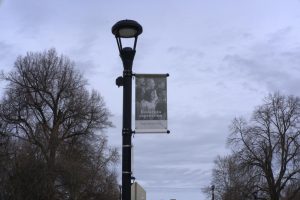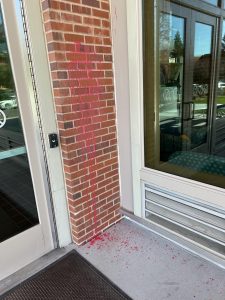Internationally Renowned Public Artist Paul McCarthy Visits Campus
February 18, 2016
“I think I do mistrust the direction the world is going in and I really mistrust that we don’t see who we are. We don’t know we’re alive and I’ve believed that since I was a kid.”
Born in 1945 in Salt Lake City, Utah, Paul McCarthy has shown his performances, installations and sculptures the world over. On Tuesday, Feb. 16 he gave a lecture to an audience of captivated students, faculty, foundry employees and community members in Maxey Hall.
“It’s not an exaggeration to call him one of the most important contemporary artists working today,” said Associate Professor of Art History and Visual Culture Studies Matt Reynolds in an email. “This is an unbelievable opportunity for the campus community to engage with someone who has transformed the art world over his long and diverse career.”
His 50 years as an artist of many mediums has amassed an extensive body of work, including pieces that have shown at the Whitney Museum in New York (2008), the Wattis Institute for Contemporary Arts in San Francisco (2009) and Moderna Museet in Stockholm (2006).
Most recently, he has produced large sculptures and performances that present images of the seemingly profane, such as a large inflatable turds (see: “Complex Pile”), or using imagery from Disney and exposing its sexual reality (see: “White Snow”). His upcoming show at the Henry in Seattle, which opens on Mar. 5, includes large pieces entitled “Bookends” which are carved out of black walnut and build upon his “White Snow” concept.

In his lecture, McCarthy gave an extensive review of his art making practice and the objects that he has made since his first academic introduction to art at the University of Utah in 1969. His progression from an interest in themes of spinning and space, Adam and Eve, character personas and his more recent obsession with “the party” took the audience through an art practice that is admirably obsessive. Despite his prolific work ethic, however, his tone was humble and professorial.
“I can say honestly I’m not as concerned with the art world or the money, only that I can make more and more [pieces],” he said.
His work’s blatant sexuality and violence could be seen as a critique, a radical revision of our societal structure. When asked about his rebellious intentions, though, McCarthy separated his personal role as an artist from the role of his art.
“I believe it gets complicated if I refer to it as a resistance. What the fuck am I doing, I’m an artist living in an art world making pieces at the foundry, so what kind of resistance are you talking about?” McCarthy said. “On the other side, we have the belief that the image is a resistance and it brings up something that actually does something.”
McCarthy’s most recent sculptures, such as “Bookends,” have been made at the Walla Walla Foundry where he began working in 2010. The Foundry is one of the biggest facilities in the United States that helps artists produce not only bronze castings but works in wood, plastic, polyurethane, resins and silvers.

“The technical virtuosity of [the White Snow sculptures] and the skill of the Foundry are just astounding, so I am always amazed at what they are capable of doing,” Assistant Professor of Art and co-coordinator of the event Nicole Pietrantoni said.
Over the past couple months, McCarthy started discussing the possibility of building a closer relationship between the Walla Walla colleges and the greater community with Walla Walla Foundry President and Whitman alumnus Dylan Farnum.
“He was really interested in engaging students … [Paul believed art school] was fundamental and it was profound and it formed who [he was] as an artist,” Farnum said.
Farnum also expressed interest in a collaboration between Whitman and the Foundry to host a longer speaker series on campus. The Foundry currently employs 150 people who work closely with artists’ work, and yet many of them never get the chance to hear the artists themselves speak about their pieces.
McCarthy’s lecture might have been the first of many more to come. Just miles from campus, some of the most prominent artists in contemporary art craft pieces at the Foundry, and the relationship between Whitman and the Foundry might just open the door to a bigger conversation.




